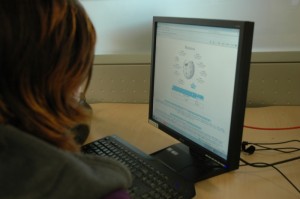EDMONTON (CUP) – A handful of University of Alberta classes have introduced Wikipedia to their classrooms as a teaching resource this past semester, despite criticisms about the website’s credibility in educational institutions.

The initiative to integrate Wikipedia into classes began in the United States with the Wikimedia Foundation’s Wikipedia Education Program, but has expanded globally to include classes in Canada and India. Professors use the website by replacing traditional writing or research assignments with students writing Wikipedia articles or improving pre-existing pages.
“In addition to getting all the benefits from a traditional research assignment, students are also learning new media literacy skills,” says Jonathan Obar, Wikipedia’s educations coordinator for Canada. “They’re being exposed to a growing Wiki culture, and they’re being exposed to a very real and very relevant social-media phenomenon.”
Obar is responsible for reaching out to Canadian universities and encouraging schools to use Wikipedia. Originally the program’s goal was to improve the poor quality of many Wikipedia articles on social sciences. Instead of hiring content experts to fix the problem, the idea of giving students the experience to rewrite them was implemented.
“The real goal is to promote Wikipedia as a tool for innovative e-pedagogy,” says Obar. “That’s the main thrust of the initiative at this point. There are other goals that go along with that, like bridging divides between the university community and Wikipedia, and teaching students new media literacy skills.”
Paula Marentette is one University of Alberta professor who uses Wikipedia for her classes. The cognitive psychology professor listed her class on the program’s Canadian Education portal, but has no affiliation with the program.
Marentette, who had never used Wikipedia before the start of this term, sees the benefits in the program, but is measured with her praise.
“From my perspective, this will make students’ writing more meaningful to them. In a discipline like psychology, students think of an essay as something they write for me, and really that’s very true,” says Marentette. “Few other people will read that work they do in a typical class essay. Here, students were thrilled and scared to hear that other people will read this.”
Until the program is used a few times and students get some expertise in it, Marentette is unsure of its full potential. “I don’t really need another flaming hoop for students. If they’re not benefiting from it, then I don’t need to do it,” she says.
The Wikimedia Foundation also sees this program as beneficial not just for students, as their contributions can help to inform a global audience. “There’s this student at Georgetown University that, in the first semester of the public policy initiative about a year and a half ago, completely re-did an article about the democratic party in Egypt,” says Obar.
“While the article was being edited and afterwards, a revolution happened in Egypt. So that student’s article, the term paper that he did for his class, has received more than 100,000 hits since the article was finished.”
Results like this have swayed professors formerly skeptical of Wikipedia to see its use in the classroom. Marentette, for example, says she’ll use Wikipedia again next term, but she says she plans to evaluate it afterward to determine whether to continue with the initiative.
“I would not use this in every course I teach forever,” she says, but I think that there’s a place where this works.”
